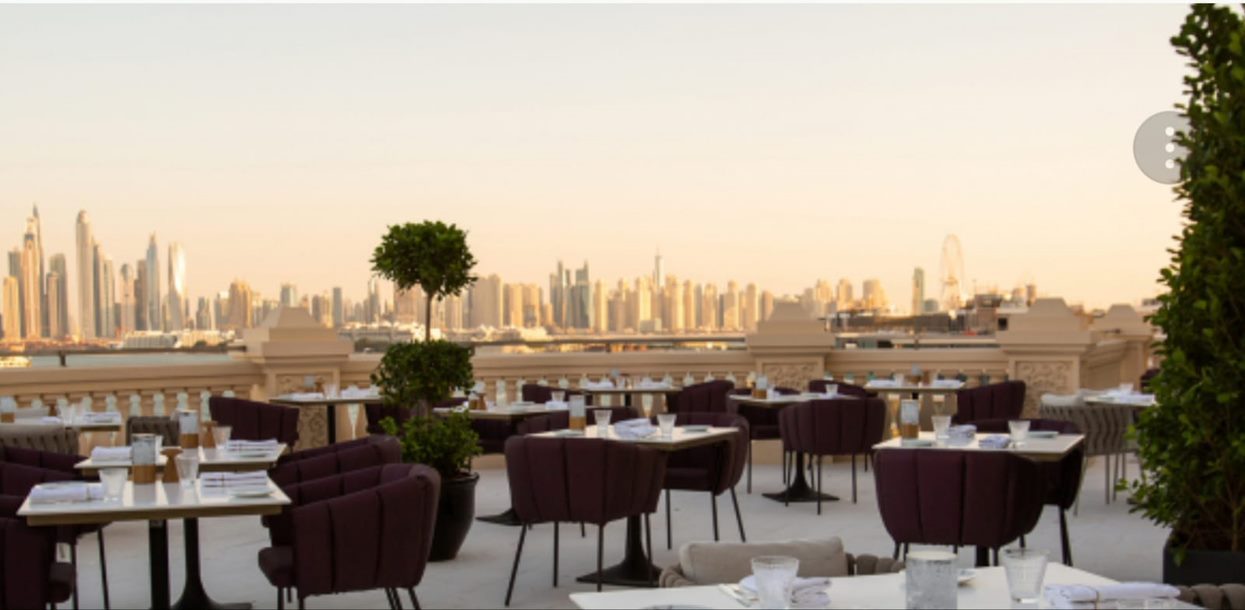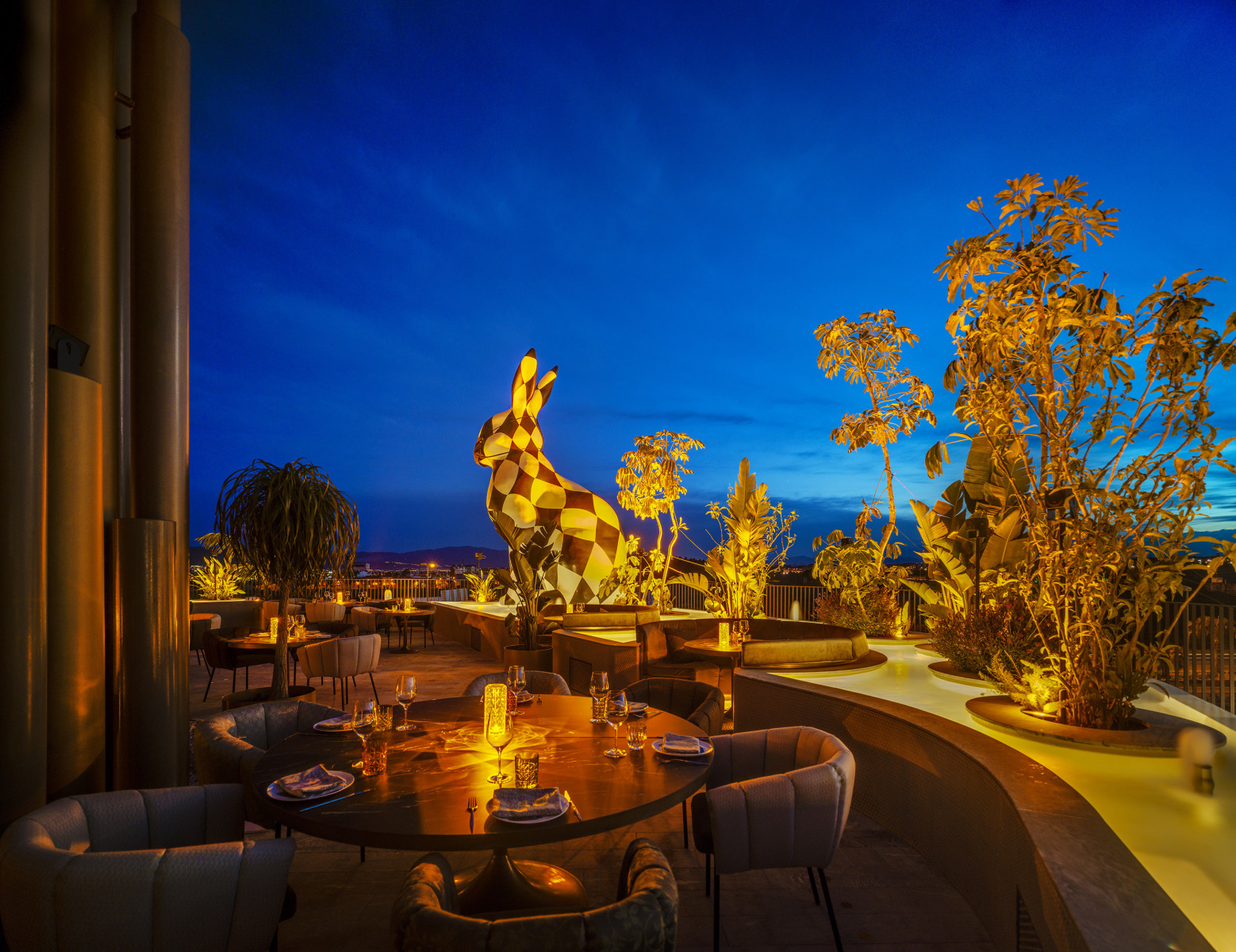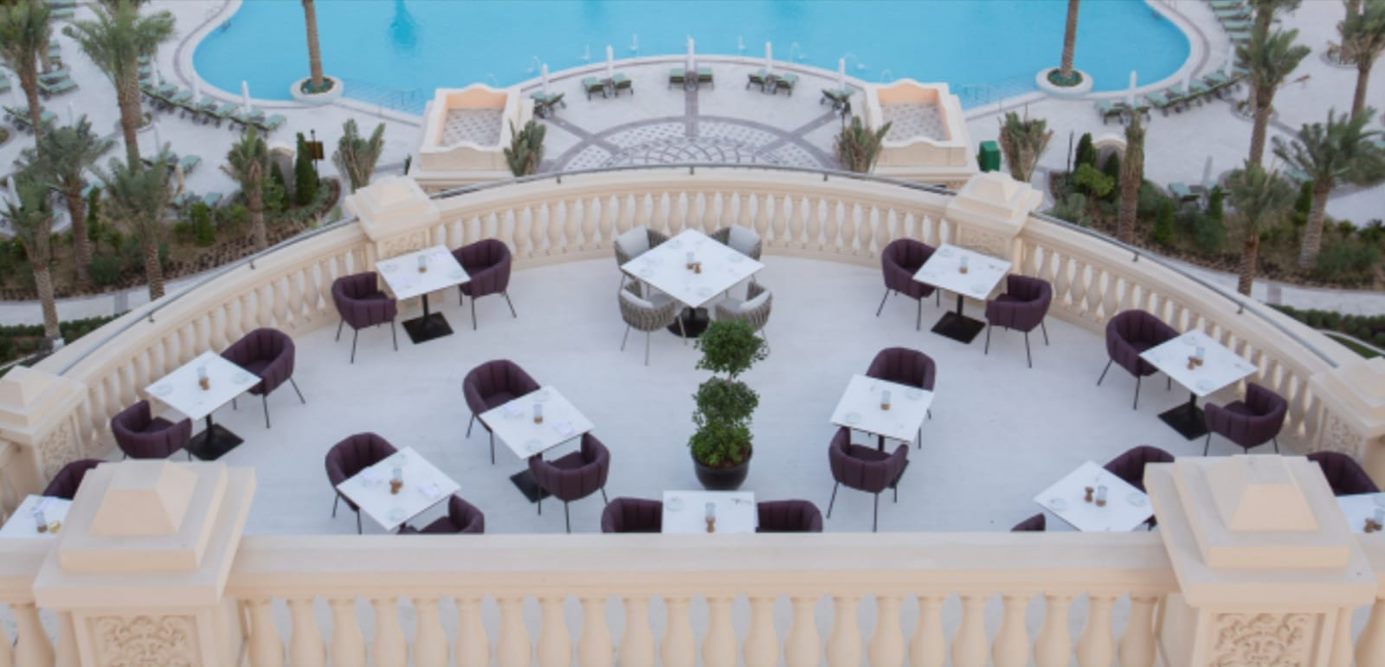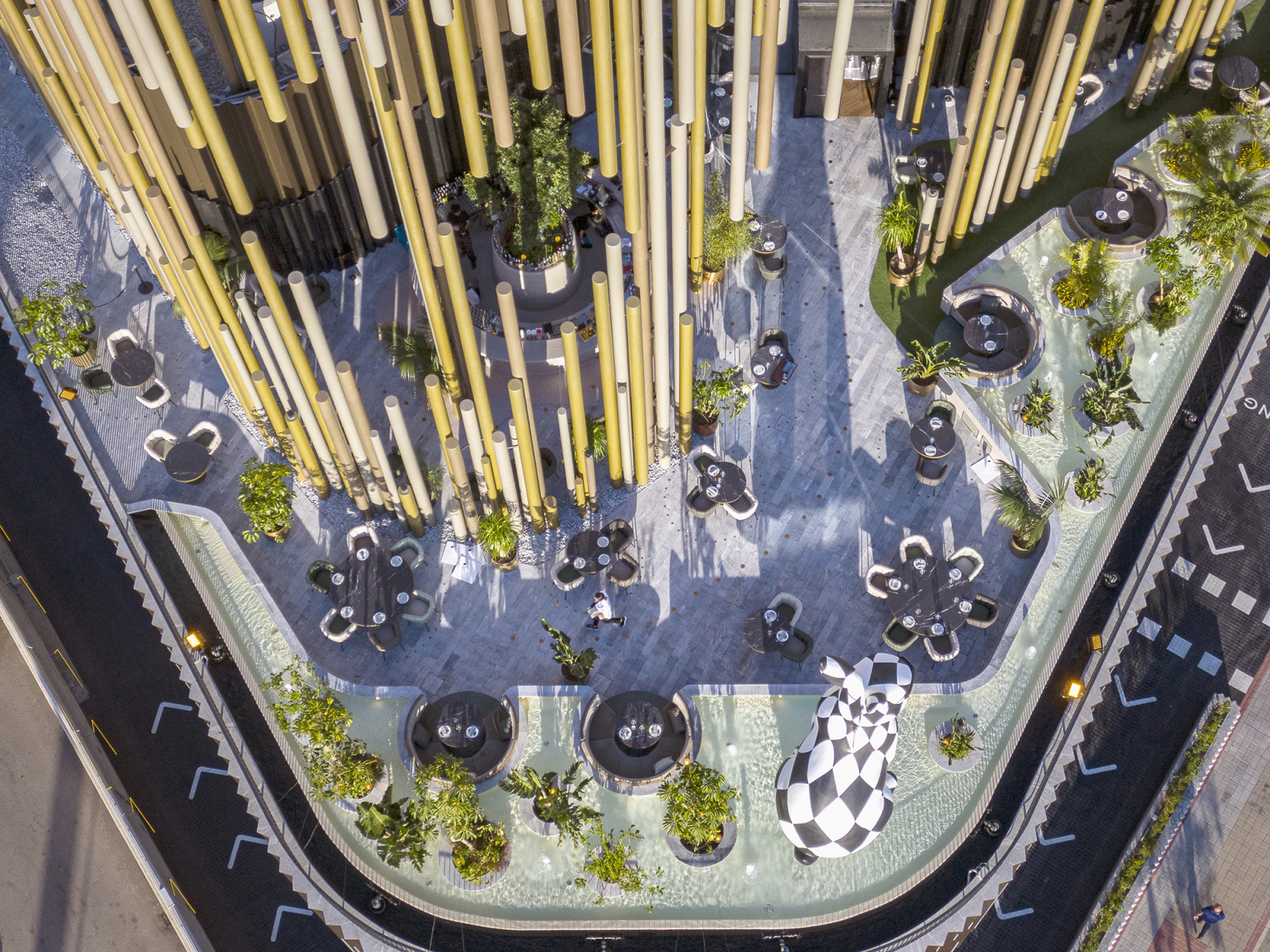CLAVEL ARQUITECTOS




Hand in hand: Clavel Arquitectos equips Alain Ducasse’s Mix restaurant in Dubai and the Odiseo leisure center in Murcia with custom-made furniture from OISIDE.
Clavel Arquitectos, the practice founded and directed by Manuel Clavel specialises in unique projects with a lot of character, like the Mix restaurant by Alain Ducasse in Dubai or the Odiseo complex in Murcia, the architect’s native city. For these two recent works he has relied on OISIDE for equipping the outdoor areas with custom made furniture. With their offices in Murcia as well as Miami Clavel Arquitectos work both on the national and international stage with very varied projects. We talked to Manuel to find out more about these two projects and the philosophy behind his very successful practice that has already garnered more than 100 awards and recognitions.
What was the leisure concept that you wanted to get across with Odiseo?
Odiseo is the result of the aim of creating a big urban leisure complex that would become a resource not just for the city of Murcia but also the entire southeast corner of the Iberian Peninsula. Spread over a total area of 15,500 s.m. the building accommodates two restaurants, a disco, a performance space, sports bar, a casino and two basements used for parking. Architecturally speaking it forms an urban oasis from which once sub merged you are brought on a journey defined by light, textures and sound. Spaces that are greatly different from one another but share a common thread, nevertheless.
And what about the Alain Ducasse Mix restaurant?
The new Alain Ducasse restaurant in Dubai was designed as a gigantic Fabergé egg measuring 20 metres in height and 10 metres in diameter held underneath the main dome of the Emerald Palace Kempinski at Palm Jumeirah. This element connects and relates its three levels. The lower part is conceived as floating in a central void of the main restaurant and its exterior form and material respond to the structural and sensorial considerations. The egg represents the mystery of life and its true secret is held within, on an upper level which can only be accessed by a few at a time, by a secret lift.
How did the possibility of working on this project come about?
In 2010 we opened an office in Miami. The well known American restauranteur Jeffrey Chodrow, who upon discovering our work commissioned us to refurbish the Asia de Cuba restaurant in New York. Because of unforeseen circumstances it didn’t happen in the end so he called us for his next project in Dubai: All’Onda. By chance Alain Ducasse was looking for an architect for his restaurant there and when he got to know our work with Jeffrey he hired us for his one. So in order to get to Dubai from Murcia we had to pass through Miami and New York. A good example of how our current work is hyper-globalised….
Where was the OISIDE furniture used for within these two projects?
For the outside areas of both restaurants.
Why was the decision taken for customised furniture?
It came about from necessity; we couldn’t find comfortable, light weight and water proof outdoor furniture with the textures we were looking for.
How was it working in collaboration with OISIDE for the customisation of the furniture for these two projects?
It involved a significant collaboration in the manufacture of the pieces that we needed. The experience was a positive one due to their flexibility and the mutual understanding of our objectives.
What is it that you most appreciate about the OISIDE furniture through your practice and why do you use it in your projects, not just in restaurants but also in homes?
For us the possibility of adapting it to our needs and the industrialisation of our designs while maintaining the quality and costs; that is the key to using them.
You identify yourselves as a practice of unique projects. Define unique …
Confronted by hyper-specialisation I always preferred having a team that was focused in finding solutions to architectural projects, independent of any particular programme. It’s true that with experience fundamental mistakes can be avoided. But too much experience (in a particular field) or too much repetition can lead you down a dangerous path of thinking that you know it all. A point at which you are in danger of loosing all creativity, because being creative involves self-questioning and a certain adrenalin rush as stimuli. The best way to avoid this is to form teams within the office where some of the members have a lot of experience in a specific area and others not so much. This way we encourage what s really important: resolving complex architectural problems. It’s the questions that really matter. And to answer your question about our varied portfolio of work the clients come to us with equally diverging problems. That’s to say if you only do housing then you’ll only be asked to do housing. We try to avoid that scenario.
What does a design proposal or a project need to make it interesting enough for you to take on? In other words what type of projects are most attractive for you to take on as a practice?
On the one hand impacting small projects allow for a greater effort in terms of research that another scale mightn’t allow. The Cloud Pantheon or the Ultra-light Centrefugal Pavilion for the Hong Kong Biennale of Architecture and Urbanism are just two examples of this type: the first contemplative and the second more interactive. We always try to ensure our projects result in a positive contribution to society and the city, like the Gifting Pavilion: another ephemeral small scale project that featured 5,000 plant pots which when it was taken down were gifted to the local citizens.
And then we’ve been working on car parks, infrastructure projects and other generally hated projects which we try to make a little more human with design that as well as improving the user experience also help towards making a safer environment especially for those parts of the population who feel themselves least protected right now. Some of our architectural design proposals have turned into urban renewal projects, with the return of streets to pedestrians that had been taken over by vehicles in recent decades. I think this small and large scale work should be undertaken simultaneously by a practice to not loose that sensibility which both of these approaches require.
When you are not designing for others what type of architecture interests you most?
Well when you are passionate about architecture you enjoy different stylistic approaches: classic or contemporary architecture, interior design, the quality of an urban space …. So you can find inspiration in a fishing village in Burma as much as by revisiting a Louis Sullivan building in Chicago.
Can you recommend three un-missable architectural or interior design projects of your home town?
The Baroque facade of Jaime Bort, in front of the Murcia City Hall designed by architect Rafael Moneo, it’s an extraordinary architectural experience, and provides two of the three that I’d recommend. And for the third I’d say the Design District of Miami as I now think of it as my second home.